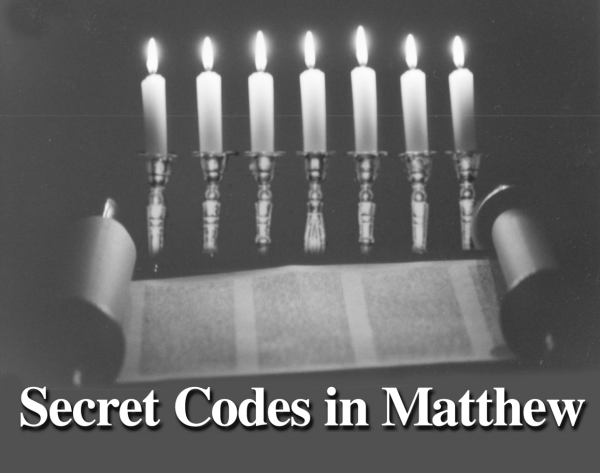The Secret Codes in Matthew: Examining Israel’s Messiah, Part 2, by Kevin M. Williams

Matthew 1:18-2:12
“Now the birth of Jesus Christ was as follows …” (Matt. 1:18).
We could likely spend a lot of time debating the season of the Messiah’s birth, but we are not going to. We will not even try.
Christian tradition holds to the 25th of December, a date that parallels the celebration of the pagan god Saturn and was indoctrinated sometime around 400 CE. Biblical scholar Alfred Edersheim1 agrees. Noted author John Lightfoot,2 on the other hand, espouses an autumn birth during the Feast of Tabernacles, while Dr. Arnold Fruchtenbaum3 teaches a nativity closer to Passover, in the spring. Each of these renowned scholars have well-founded arguments leaving us to investigate the matter on our own, reaching our own conclusions. The really important news is—the Messiah was born!
Other gospel accounts of the Messiah’s birth begin, “And it came to pass.” John’s words resonate “In the beginning was the Word” (John 1:1). Perhaps the apostle Paul says it best, “But when the fullness of the time came, God sent forth His Son, born of a woman” (Galatians 4:4).
The plan—God’s plan—unfolded right on schedule—in “the fullness of time.” The miracle occurred not a moment too soon, and by all accounts, not a moment too late. Everything was in order.
In part one, we examined that according to some Hebrew theologians, the time appointed for the earth is divided into four distinct ages.
1. Tohu—void (from creation to Abraham) 2,000 yrs
2. Torah—instruction (Abraham to Messiah’s advent) 2,000 yrs
3. Moshiach—the Messianic Kingdom 2,000 yrs
4. Shabbat—the Sabbath rest 1,000 yrs
TOTAL 7,000 years The Soncino edition of the Talmud includes a footnote that the Messiah should have been born at the beginning of this third epoch. While they have no faith that this occurred, they do believe that he will still appear within this 2,000-year period.
This is, believe it or not, an important facet of the birth of Jesus as it relates to the 3rd and 4th epochs. In light of what Peter says, “that with the Lord one day is like a thousand years, and a thousand years like one day” (2 Peter 3:8), we have an important clue to our Matthew examination.
In Jewish life, there are six days to the week, and then the Sabbath. In fact, the Sabbath is the only day of the week with a name! All others are referred to by their number.
With the Shabbat falling on the 7th day, or last day of the week, the following two days (Sunday and Monday respectively) are days of “remembering the Sabbath.” However, by the 4th day, Thursday, one’s attitude is supposed to switch gears, and begin looking forward the next Sabbath. Thursday and Friday, therefore, become days of preparation for the coming day of rest.
This may tie directly into the Hebrew concept of the millennial epochs, and the birth of the Messiah. In the first two epochs—with each epoch lasting two thousand years, or for our purposes, the first four “days of the week”—man remembered all that had been lost during the first Sabbatical: his life in the Garden of Eden. He remembered the “rest” that was lost and the subsequent striving to return to paradise.
Category: Biblical Studies, Pneuma Review, Summer 2001


